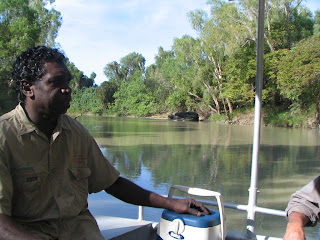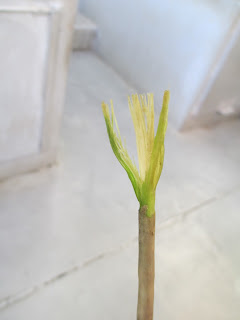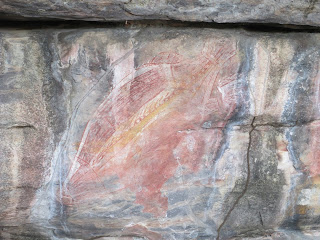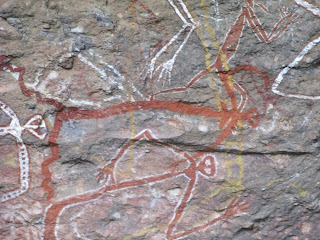I think if you click or double click on the photos they get bigger?
The trip from Darwin to Jabiru in the Kakadu only about 200 kms.
We passed the Nat. Parks Rangers lighting some controlled fires on the road edge.
These fires don't rage at this time of the year, and are an essential part of the Park management.
Kakadu NP is vast (20,000 square kms) with the main threats to the region being weeds, buffalo, pigs, minning and maybe the cane toad.
Our campsite. Great deal 4 nights for price of 3!
9am cruise on the East Alligator River.
Note how some balanda (white fella) thought crocs. were alligators.
Our very able guide Neville
This is the crossing from the Kakadu NP to the tribal Arnhem Lands.
This egret reckoned he could catch fish in the shallow crossing.
Crocodiles everywhere on the river. We saw over 40 in the 2hr cruise.
This fella was having a good laugh!
This was not a nasty growth but a satellite tracking device.
Some great rock formations and scenery along the river.
2 views from the Arnhem side of the river where we landed for a brief stop.
Neville showed us some traditional tools and hunting spears.
The above is a paintbrush made from the roots of a tree on the edge of the river.
Using a spear thrower (woomera) Neville threw the spear clean across the river and into the trees on the other side. Very impressive!
Kakadu is as much Aboriginal culture as it is animal and croc. spotting.
There are 2 visitor centres or Cultural Centres and they are well set up.
The Park Board Rangers also hold FREE talks and walks throughout the Park and at the Camps covering all the topics of interest.
We would get up early and do these outside walks and talks in the morning, have a rest in the heat of the day in the caravan with the aircon on full (temps. over 30 in the shade every day! and this is the cold season!!!) and then attend more talks when they were on in the evening.
We now have great respect for the, still living, aboriginal culture that has been in this area for 20,000 and possibly 50,000 years. It is very hard to get around this time scale but the dating of some of the thousands of rock art sites in the Park has confirmed these dates.
One of the Ranger talks at 3 rock art sites
This shelter has been dated as having been used 20,000 years ago with intensive use 2,000 years ago.
You need to take notice of these signs around this part of the world!
One of the many billabong and wet areas in the Park.
A Pandana flower with nut inside.
Probably a dingo footprint. We have seen a few dingos in the wild.
There are 2 mining leases in the Park with the Ranger Uranium mine just out of Jabiru producing since the 1980's. A huge hole that is now being backfilled! The mine is now going underground.
One last cruise - Yellow Water Cruise on the Sth Alligator River
Lots of birds
The now usual crocs. How do you like my feet?
Sea Eagle
We also saw 3 of the Park's pests. These pigs in the distance, and even further away and no photos, buffalo and wild horses.
A darter drying its wings
A Kingfisher
A Jabiru
And would you believe even a Yellow Tree snake
The day finished with some magic late afternoon colours
And then the usual sunsets around here with the fire smoke.
Now we travel west again heading for WA.



































































It is an amazing region. I love your photos. Our timing didn't allow for ranger talks, they look really interesting.
ReplyDeleteD